Artist’s conception of the Unified AGN Model. The unified model includes the central black hole, a rotating disk of infalling material surrounding the black hole, and the jets speeding outward from the poles of the disk. In addition, to explain why the same type of object looks different when viewed from different angles, a thick, dusty, doughnut-shaped “torus” is included, surrounding the inner parts. The torus obscures some features when viewed from the side, leading to apparent differences to the observer, even for intrinsically similar objects. Astronomers generically call this common set of features an active galactic nucleus (AGN).
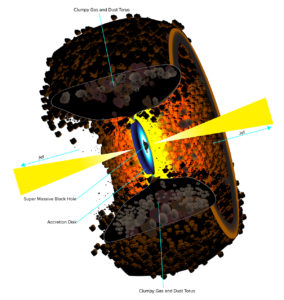
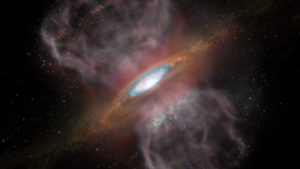
A Star, Sprinkled with Salt
Artist impression of Orion Source I, a young, massive star about 1,500 light-years away. New ALMA observations detected a ring of salt — sodium chloride, ordinary table salt — surrounding the star. This is the first detection of salts of any kind associated with a young star. The blue region (about 1/3 the way out from the center of the disk) represents the region where ALMA detected the millimeter-wavelength “glow” from the salts.
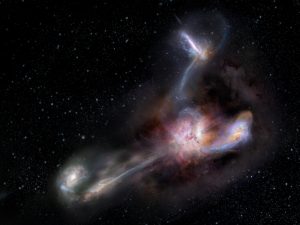
The Most Luminous Known Galaxy
Artist impression of W2246-0526, the most luminous known galaxy, and three companion galaxies. New observations with the Atacama Large Millimeter/submillimeter Array (ALMA) reveal distinct streamers of material being pulled from the three smaller galaxies and flowing into the more massive galaxy, which was discovered in 2015 by NASA’s space-based Wide-field Infrared Survey Explorer (WISE). It is by no means the largest or most massive galaxy we know of, but it is unrivaled in its brightness, emitting as much infrared light as 350 trillion Suns.
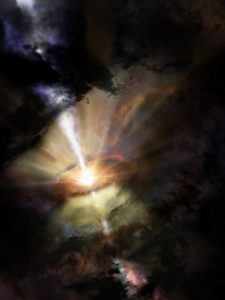
Inflow, Outflow Cycle of Gas Near Black Hole
Artist impression of Abell 2597 showing the central supermassive black hole expelling cold, molecular gas — like the pump of a giant galactic fountain. Recent data suggests that the expelled gas will eventually fall back towards the black hole, restarting the cycle.
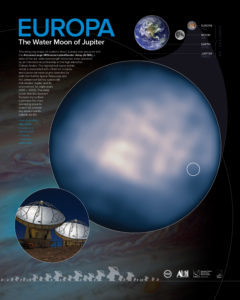
Europa, The Water Moon of Jupiter Poster
Downloadable poster of an ALMA observation of Europa. This intriguing image of Jupiter’s moon, Europa, was acquired with the Atacama Large Millimeter/submillimeter Array (ALMA), a state-of-the-art, radio-wavelength telescope array operated by an international partnership in the high elevation Chilean Andes. The highlighted region (white circle) is associated with a thermal anomaly and a potential water plume detected by both the Hubble Space Telescope and the unmanned Galileo spacecraft that studied Jupiter and its environment for eight years (1995-2003). The deep ocean that lies beneath Europa’s icy surface is perhaps the most promising place to search for present-day environments suitable for life.
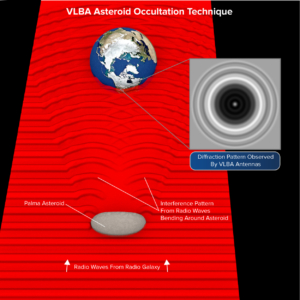
VLBA Sees Diffraction Patterns Caused by Asteroid
Radio waves from a distant galaxy were blocked from view by an asteroid in our Solar System. However, in a process called diffraction, waves bent around the asteroid and interacted to form a pattern of bright and dark circles. Astronomers analyzed this pattern to learn new details about the asteroid’s. size, shape, and orbit.





